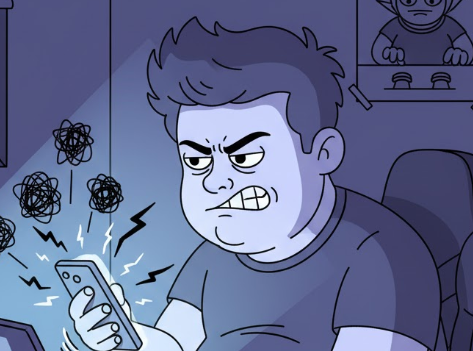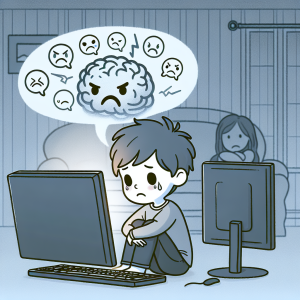
Parents, Culture, and Cyberbullying Clues
Five hours. That’s how long most adolescents in a new study were online each day. And here’s the twist: parents who knew more about what their kids did online were also more likely to know when their kids were seeing or experiencing cyberbullying. In other words, awareness isn’t nosiness, it’s protection.
This study surveyed 407 Jewish and Arab parents in Israel to understand how parental monitoring, teen disclosure, and culture connect to cyberbullying. The findings feel close to home for every school and family: it’s not just how much kids are online, it’s how adults stay connected to what happens there.
What the research actually found (in plain language)
- Screen time is high. Most teens logged at least five hours a day.
- Monitoring styles differ. On average, Jewish parents reported higher monitoring and control.
- What parents notice isn’t the same. Arab parents were more likely to know when their teen had witnessed cyberbullying. Jewish parents were more likely to know when their teen had experienced it.
- Education level mattered. Parents with less formal education reported higher awareness of their child’s cyberbullying experiences.
- Two things boosted parental awareness:
- When teens shared more with their parents (disclosure), and
- When parents felt they understood their child’s online activities.
Takeaway: Warm connection plus specific online knowledge helps adults catch problems early.
Why kids struggle with self-regulation online
Picture the typical school day: a tough group project, a sports tryout list, a text that gets misread at lunch. Now add phones. Social media amplifies every emotion, reward, and conflict—fast. The brain systems that crave likes and instant feedback are in overdrive during adolescence. Self-regulation skills are still under construction, so teens need scaffolding from the adults around them.
Here’s the kicker: the study suggests that how we scaffold matters. Monitoring that is paired with open conversation and trust (not just rules) is linked with teens telling parents more, which in turn is linked with adults knowing when cyberbullying is happening.
How screen time connects to mental health
It’s not just the number of hours. It’s the quality of those hours:
- Passive scrolling can fuel comparison and anxiety.
- Active, supportive communities can reduce loneliness and boost belonging.
- Conflict-heavy group chats can spill into school hallways the next morning.
Schools can’t control every app, but they can teach digital emotion regulation: naming feelings, pausing before posting, choosing healthy spaces online, and knowing when to get help.
Culture changes the story—and the solution
The study’s multicultural lens matters. Community norms shape what teens share, what parents ask, and what counts as “normal” online behavior. That’s why a one-size-fits-all approach falls flat.
- In some communities, parents knew more about witnessing cyberbullying, which can signal strong networks where kids talk about what they see.
- In others, parents knew more about experiencing cyberbullying, which can signal closer tracking of personal harms.
Schools should tailor outreach: partner with community leaders, translate materials, and host forums that reflect families’ values and languages. When parents feel seen, they show up—and kids benefit.
The breakthrough: disclosure beats surveillance
There’s a quiet hero in this research: child disclosure. When teens are used to telling parents what’s happening online, adults are better at spotting risk. That nudges us away from “Gotcha!” monitoring and toward relational monitoring—the steady, predictable check-ins that build trust.
Try this script at home or in advisory:
- Daily two-minute check: “What was the best part of your online time today? What was weird or uncomfortable?”
- Curiosity over control: “Show me the communities you enjoy. What makes them feel safe?”
- Problem-solving together: “If this comes up again, what could we try? Who else at school can help?”
What schools can do this month
1) Add a cyberbullying quick-check to SEL.
Once a week, ask students to reflect (privately) on three prompts: Did you see harm online? Did you experience harm? Who could you tell? Follow up with small-group skills practice.
2) Train “digital first responders.”
Counselors, deans, and trusted teachers learn a simple triage flow: listen, document, de-escalate, and refer. Pair this with referral cards students can grab without asking.
3) Host community-specific parent nights.
Co-design with families. Offer examples that match local platforms and group-chat norms. Provide take-home conversation starters in multiple languages.
4) Teach bystander power.
Bystanders can collect screenshots, report within apps, and support targets. Role-play how to intervene safely and when to loop in adults.
What parents can do this week
- Map the digital day. List your child’s top three apps and when they use them. Know the features: DMs, group chats, vanishing messages.
- Co-create two rules. One about space (where devices live overnight), one about pace (when to take breaks).
- Agree on a help signal. A single emoji, code word, or shared note means “I need backup.”
- Practice screenshot safety. Show how to preserve evidence and why not to escalate in-app.
Why this matters tomorrow morning
Cyberbullying isn’t just an “online” problem. It walks into first period, hides in the cafeteria, and rides the bus home. When adults tune in—culturally, relationally, and practically—kids get better at tuning themselves. The study’s message is clear: knowledge plus connection is protective.
Quick tools you can use
- Three questions for homeroom: What did you see online yesterday? Did anyone need help? What’s one kind comment you could send today?
- One poster for hallways: Pause, Check Feelings, Choose Kind.
- One sentence to start hard talks: “You don’t have to be in trouble for us to solve this together.”
Let’s wrap this into action
Practical takeaway: Start a two-minute daily digital check-in at home or school, and audit the top apps your students use. Pair limits with listening.
Call to action: Advocate for a culturally responsive cyberbullying plan in your district: community-specific parent nights, bystander training, and a clear reporting flow that protects targets.
Thought-provoking question: If you could change one online habit in your school community this month, what would it be—and how will you know it worked?
Let’s Talk About It
- What’s the biggest mental health challenge you see in schools today?
- How can schools better support students’ emotional well-being online and offline?
- What’s one school psychology insight that changed the way you parent or teach?
Share this with a colleague or caregiver. The more adults who know, the safer our kids will be.



